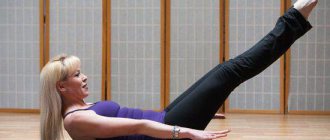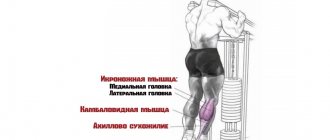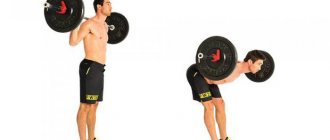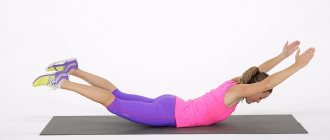09/26/2018 Category: Pregnancy Course Author: Ksenia Konstantinova
Pregnancy is a crucial period in a woman’s life, during which it is very important to take care of your own health. Walking in the fresh air, swimming, moderate physical activity, and a balanced diet are necessary for every expectant mother. But there is one more area to which the expectant mother should pay special attention. This is strengthening and maintaining the tone of the pelvic floor muscles. The exercises with which this zone is trained are named after Arnold Kegel, an American obstetrician-gynecologist of German origin. What role the intimate muscles play in the body of the expectant mother, why it is so important to pay attention to them and how to train them will be discussed in this article.
- The benefits of Kegel exercises for expectant mothers
- When can you start exercising?
- Contraindications for exercise
- Types and techniques of performing Kegel exercises for pregnant women
Exercise "Hold"
- Exercise "Wave"
- Exercise "Elevator"
- Exercise "Shiva"
- Exercise "Madonna"
- Exercise "Goalkeeper"
- Achilles tendon stretching exercise
What are Kegel exercises?
In the middle of the last century, Arnold Kegel, a professor of gynecology at the University of Southern California, developed and introduced into medical practice a series of exercises that help women restore and maintain the tone of the pelvic floor muscles. Regular physical activity aimed at this area helped get rid of hemorrhoids, urinary incontinence, prevent prolapse of internal organs and uterine prolapse, and remove congestion in the pelvis. Over time, these exercises began to be used not only by patients at risk, but also by pregnant women. The reason is obvious: while carrying a child, the increasing weight of the uterus puts pressure on the unprepared pelvic floor muscles, which leads to their weakening and stretching, and this is a direct path to all of the above ailments.
The pelvic floor muscles experience pressure from the internal organs every day, and the higher their tone, the better for the whole body
The complex of these muscles is a kind of muscular hammock, which in ordinary life sags under the weight of the internal organs. The stronger the muscles, the less they deform under load and the better they perform a supporting function. In ordinary life, they train by walking, running, and active physical activity. But these days, when a sedentary lifestyle has become the norm (people sit in transport, in the office, at home in front of the computer or TV), the pelvic floor muscles experience a lack of load and are partially atrophied. As a result, they find themselves completely unprepared for such a stressful phenomenon as pregnancy. The exercises themselves, introduced by Dr. Kegel into medical practice, were not know-how. Methods of strengthening intimate muscles have been familiar to mankind since ancient times. So, for example, several pages in the famous Indian Kama Sutra are devoted to this issue. And in Eastern cultures, the development of intimate muscles was in the order of things for women.
The benefits of Kegel exercises for expectant mothers
Doctors highlight the following positive aspects that arise from regular exercise in the intimate muscles:
- prevention of hemorrhoids;
- prevention of urinary incontinence;
- increased blood circulation in the pelvic organs, enrichment of tissues with oxygen and nutrients, which helps reduce congestion;
- strengthening the walls of the vagina, preventing ruptures during the period of expulsion of the fetus;
- rapid restoration of the birth canal after delivery;
- maintaining the pelvic organs in the correct position;
- improvement of hormonal levels (physical activity stimulates the release of female sex hormones into the blood, which entails a rejuvenating effect, improving the overall tone of the body);
- strengthening immunity against infections and pathogenic microflora;
- increased libido, awakening sexuality and the ability to orgasm.
When can you start exercising?
Obstetricians and gynecologists recommend starting exercise in the first weeks of pregnancy, but Kegel exercises will be useful for the expectant mother at any stage. It is easier to exercise in the first trimester - the pelvic floor muscles are not yet under stress from the growing uterus, you can be well prepared for future tests and calmly master the exercise technique. In addition, the fetus does not yet put pressure on the inferior vena cava, and it is convenient to practice while lying on your back.
From the second trimester (more precisely, from the 18th week), doctors recommend training in a sitting or standing position.
Basic recommendations
Breathing during gymnastics during pregnancy is very important.
The position of your body when performing Kegel exercises does not play a special role, but at first it is recommended to perform them lying down. This will help you fully feel the work of the necessary muscles. Subsequently, they can be practiced at any time when it is convenient for you, standing, sitting and even while walking.
It is recommended to breathe deeply and evenly. As mentioned above, tense only those muscles that need to be strengthened, without involving other muscle groups. Don’t overwork yourself during gymnastics—it’s better to take a break. It's easy to miss the stress transferring to your abs or thighs. Having understood the intricacies of gymnastics, you can move on to performing exercises.
Contraindications for exercise
There are a number of restrictions that do not allow the expectant mother to practice intimate gymnastics. These include:
- uterine tone;
- uterine bleeding;
- threat of miscarriage;
- toxicosis;
- gestosis;
- heat.
Before starting training, every expectant mother should consult with her obstetrician-gynecologist. Seeing the whole picture of the course of pregnancy, only a doctor can say whether the patient can do intimate gymnastics or not. The pelvic floor muscles are closely connected to the uterus, and during an “interesting position,” every impact on them is instantly reflected throughout the entire reproductive system. Remember that if you experience painful or unpleasant sensations while performing exercises, you should stop exercising and discuss the situation with your doctor.
In intimate gymnastics, there are aids that enhance the effect of training. For example, pneumatic exercise machines, vaginal balls, jade eggs. All these devices cannot be used during pregnancy, especially if the woman did not deal with this issue before conception. Foreign objects in the vagina risk causing uterine tone, which is dangerous. Leave them for the postpartum period.
Rules for fitness during pregnancy
There are certain rules for physical exercise for pregnant women that are recommended to be followed:
- there is no need to suddenly take on any load if you have not practiced this sport before;
- always listen to yourself. If the slightest discomfort occurs, you should stop exercising;
- If a woman was actively involved in sports before pregnancy, then she should not suddenly quit physical activity. There should be reasonable physical activity. After all, some negative phenomena during pregnancy arise due to an inactive and sedentary lifestyle - pain in the lumbar region, swelling, etc.;
- try to be careful when playing sports, especially if you have never done it before;
- do not use sudden movements, turns, bends, do everything smoothly;
- It’s a good idea to attend a school for expectant mothers at health centers and conduct classes under the supervision of a specialist;
- When studying at home, you need to familiarize yourself with educational video lessons;
- the room must be well ventilated before performing fitness, and the temperature should be about +20–23 °C;
- exercises are best done on an empty stomach: 1–2 hours after meals or 1–1.5 hours before meals;
- It is recommended to perform sets of exercises daily at a set time;
- how many repetitions to do and what the load will be is determined by the pregnant woman herself, depending on her well-being and physical fitness;
- choose fitness clothing from natural fabrics that do not restrict movement;
- monitor your breathing;
- Finish your sessions with relaxation exercises.
Did you know? An excellent preventative measure against varicose veins is to frequently raise your legs above body level. You can simply lie down with a high pillow under your feet. This is especially true after being on your feet for a long time.
Gymnastics for pregnant women in the third trimester: video The above activities during the 3rd trimester of pregnancy will help maintain good health, relieve swelling, and prepare for labor. However, before doing so, you should consult a doctor and not overexert yourself. You should avoid doing gymnastics if you feel unwell, and while doing it you should listen to your condition.
Pregnancy Exercises for pregnant women
Types and techniques of performing Kegel exercises for pregnant women
The entire system of intimate training, proposed by Arnold Kegel, consisted of three principles of muscle action: contraction, compression and expulsion. The most common are seven types of exercises based on these principles. They will be discussed below.
Before starting classes, it is important for the expectant mother to feel the muscles she will be working with. The easiest way to do this is while urinating, by trying to stop the stream. The second way is to place your index finger in the vagina and try to squeeze it. When performing a self-examination, it is important not to involve your abs, buttocks, or legs. If the muscles feel weak, try to concentrate, concentrate on them. As the load increases, they will appear clearer and brighter. This is one of the most responsive muscle groups in the female body, and therefore within a few days you can feel the effect of training.
Before starting exercise, it is important to empty your intestines and bladder; it is advisable not to eat dense food the day before in order to feel better about your body. Breathing should be free.
Pregnant women should remember that all exercises should be performed “without fanaticism”; you should not overdo it. And at the slightest discomfort, it is better to pause training until the condition stabilizes.
Below are seven types of Kegel exercises for pregnant women that you should do daily, gradually increasing the number of repetitions. The first five can be practiced from the very beginning of pregnancy, and it makes sense to start actively practicing the last two in the third trimester, when it’s time to prepare the birth canal for pushing. But if you wish, you can do the whole complex from the first trimester. However, remember that the first 12 weeks of an interesting situation are a very fragile time for the unborn baby. The embryo must attach well to the wall of the uterus, and all organ systems of the unborn child are formed. It is at this time that the vast majority of miscarriages occur, and if a pregnant woman feels the slightest discomfort, it is better to wait with exercises until a calmer period - the second trimester.
Exercise "Hold"
This is a basic exercise that warms up the intimate muscles and helps them prepare for training. The starting position is the posture of the woman in labor on the maternity chair. The woman lies on her back, pressing her feet to the floor and spreading her legs to the sides. Now you need to squeeze the muscles of the perineum and hold them in tension for five to ten seconds, then relax and do nine more repetitions. Gradually you need to increase the number of approaches to thirty. After the 18th week of pregnancy, this exercise is best performed while sitting so as not to press on the inferior vena cava.
Exercise "Wave"
The “Wave” exercise helps you learn how to control the muscles of the perineum and anus separately.
If you have a fitball at home, then it is an ideal assistant for this exercise. If not, then any elevation will do - a bed, sofa or chair. Starting position: lying on the floor, legs slightly bent and placed on a raised platform. You need to tense the muscles of the perineum, then contract the muscles of the anus and relax them in the reverse order. Speculatively, one can imagine a wave formed from alternately working muscles. At first, you may not be able to quickly and clearly control the two muscle groups separately, so perform the exercise at a comfortable pace, speeding up over time. Increase the number of repetitions to fifteen. After week 18, this exercise, like the “Hold,” is recommended to be done while sitting.
Exercise "Elevator"
The “Elevator” exercise will require concentration and more effort than the previous two. But it's worth it because it covers almost the entire birth canal. The starting position is the same as in “Hold”, or sitting. Imagine that the vagina is a shaft with seven floors, at each of which the elevator must stop. You need to strain the segments of the vagina from the lowest to the top, stopping briefly at each, and, having reached the top, “go” back. At first, it may not be possible to separate the “floors,” or the “elevator” may “fall” immediately from the seventh to the third. It’s not scary, the main thing is to do the exercise at a comfortable pace and try to clearly feel each segment. Visualization helps a lot here. Over time, the training will become easier and faster. The optimal number of repetitions is ten.
Exercise "Shiva"
During the “Shiva” exercise, not only the pelvic diaphragm is trained, but also the muscles of the back and buttocks.
This exercise, like the “Madonna”, is partially borrowed from yoga for pregnant women. The starting position is the same as in the “Hold” exercise. Lying on your back, you need to bend your knees and spread them apart, leaving your feet pressed to the floor. Raise your pelvis and stay in this state for a while. At the same time, perform a series of contractions and relaxations of the intimate muscles. Then return to the starting position. Complete ten repetitions in total.
Exercise "Madonna"
This exercise is a successful combination of elements of yoga and intimate gymnastics.
Starting position is sitting, legs bent under you, buttocks pressed to the heels, arms pulled back and resting your palms on the floor. Lift your hips up and hold this position. Squeeze your pelvic floor muscles for a while, then relax, go back and repeat fourteen more times.
The following two exercises will be especially relevant in the third trimester of pregnancy, helping to rehearse pushing and prepare the tendons for stress.
Exercise "Goalkeeper"
The “Goalkeeper” exercise helps to rehearse pushing during the upcoming birth.
In this exercise, the expectant mother will try to push. You need to sit in the lotus position or squat. Holding your breath, try to push slightly, as if you were trying to go to the toilet in a big way. If everything is done correctly, you can put your hand on it and feel how the vagina seems to be pushed out, turning outward. It is important to perform the exercise with an empty bowel and bladder. The number of repetitions is up to three times.
Achilles tendon stretching exercise
Try to increase the time you spend in this position every day and gradually try to do without additional supports.
This type of training will help prepare for vertical childbirth, a position in which is considered more physiological than the traditional maternity hospital reclining position on the Rakhmanov chair.
Under the influence of gravity, the child passes through the birth canal easier and faster, and the pushing process is simplified. This is exactly how our ancestors gave birth for thousands of years. But this position may be uncomfortable for those women in labor whose Achilles tendon is not stretched enough (it is located on the back of the lower leg from the heel to the calf muscle). The purpose of this exercise is to gradually prepare him for the load. Starting position: standing, legs shoulder-width apart, feet slightly turned to the sides. Slowly squat down. It is important not to lift your feet off the floor and keep your back straight. If you can’t sit down fully, help yourself by holding onto the support with your hands. Sit in this position for several minutes every day, gradually increasing the time. Experienced midwives joke that in this position it is convenient to wash the floors: it stretches the tendons and is useful for housework.
How to achieve results
Naturally, in order to see and feel the results, you need to exercise regularly.
Then within a few weeks the condition of your muscles will improve significantly. Such training should begin from the very beginning of pregnancy, and then by the time you give birth, your intimate muscles will learn to do these exercises independently and without your control. Of course, even in such seemingly simple exercises you cannot overload the body. All experts warn about this. After all, the main goal is to learn to feel your muscles, and not to try to load them as much as possible.











